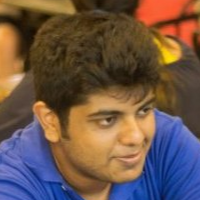International Journal of Information Technology and Computer Science (IJITCS)
IJITCS Vol. 9, No. 3, 8 Mar. 2017
Cover page and Table of Contents: PDF (size: 764KB)
A Real-Time 6DOF Computational Model to Simulate Ram-Air Parachute Dynamics
Full Text (PDF, 764KB), PP.19-27
Views: 0 Downloads: 0
Author(s)
Index Terms
Real-time, Parachute, 6DOF, Ram-air, Dynamics, Simulation
Abstract
Computer simulations are used in many disciplines as a methodology of mimicking behaviors of a physical system or a process. In our study we have developed a real-time six degree- of-freedom (6DOF), computational model that can replicate the dynamics of a ram-air parachute system which is the design of parachute that is widely used by the militaries worldwide for parachute jumps. The proposed model is expected to be adapted in to a real-time visual simulator which would be used to train parachute jumpers. A statistical evaluation of the proposed model is done using a dataset taken from NASA ram-air parachute wind tunnel test.
Cite This Paper
Sandaruwan Gunasinghe, GKA Dias, Damitha Sandaruwan, Maheshya Weerasinghe, "A Real-Time 6DOF Computational Model to Simulate Ram-Air Parachute Dynamics", International Journal of Information Technology and Computer Science(IJITCS), Vol.9, No.3, pp.19-27, 2017. DOI:10.5815/ijitcs.2017.03.03
Reference
[1]T. E. Tezduyar, S. Sathe, M. Schwaab, J. Pausewang, J. Christopher, and J. Crabtree, “Fluid-structure interaction modeling of ringsail parachutes," Comput. Mech., vol. 43, no. 1, pp. 133-142, 2008.
[2]K. Takizawa and T. Tezduyar, "Computational Methods for Parachute Fluid-Structure Interactions," Archives of Computational Methods in Engineering, vol. 19, pp. 125-169, 2012.
[3]S. Mittal, P. Saxena, and a. Singh, “Computation of two-dimensional flows past-air parachutes," Int. J. Numer. Methods Fluids, vol. 35, no. 6, pp. 643-667,2001.
[4]T. E. Tezduyar, S. Sathe, J. Pausewang, M. Schwaab, J. Christopher, and J.Crabtree, "Interface projection techniques for fluid-structure interaction modeling with moving-mesh methods," Comput. Mech., vol. 43, no. 1, pp. 39-49, 2008.
[5]E. S. Bruce, "The Parachute," Royal United Services Institution. Journal, vol. 78, pp. 796-801, 1933.
[6]K. Takizawa and T. Tezduyar, "Computational Methods for Parachute Fluid-Structure Interactions," Archives of Computational Methods in Engineering, vol. 19, pp. 125-169, 2012.
[7]D.C. Jalbert, "Multi-cell wing type aerial design", U.S. Patent 3 285 546, Nov.15, 1966.
[8]Nh-global.com, “Types Of Parachute." [Online]. Available:http://www.nhglobal.com/parachute/types_manufacture.html. [Accessed: 05-Jun-2015].
[9]V. Kalro and T. E. Tezduyar, "A parallel 3D computational method for fluid-structure interactions in parachute systems," Computer Methods in Applied Mechanics and Engineering, vol. 190, pp. 321-332, 2000.
[10]J. D. Nicolaides and M. A. Tragarz, "ParafoilWind Tunnel Tests," 1971.
[11]J. S. Lingard, "Ram-Air Parachute Design," Precis. Aer. Deliv. Semin. 13th AIAA Aerodyn. Decelerator Syst. Technol. Conf., no. May, pp. 1-51, 1995.
[12]"Modelling of the Variation of Air Density with Altitude through Pressure, Humidity and Temperature ." [Online]. Available:http://www.emd.dk/files/windpro/WindPRO_AirDensity.pdf.
[13]J. Diebel, "Representing attitude: Euler angles, unit quaternions, and rotation vectors," Matrix, vol. 58, pp. 1-35, 2006.
[14]"Flight Dynamics Summary." [Online]. Available: http://aerostudents.com/files/flightDynamics/flightDynamicsFullVersion.pdf.
[15]P. Lissaman and G. Brown, "Apparent mass effects on parafoil dynam- ics," in Aerospace Design Conference, American Institute of Aeronau- tics and Astronautics, 1993.
[16]G. Kowaleczko, "Apparent masses and inertia moments of the parafoil," J. Theor. Appl. Mech., vol. Vol. 52 nr 3, pp. 605-616, 2014.



